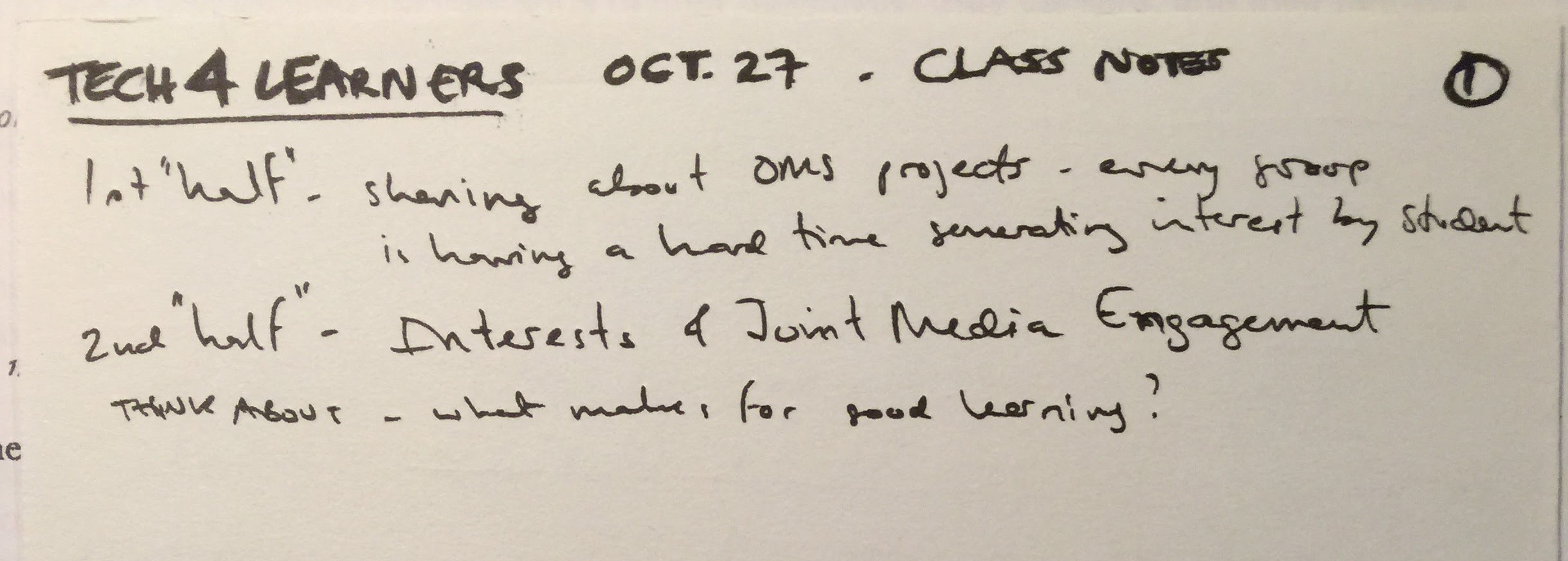Category Archives: LDT – GSE – Stanford
Intro Teaching – Week 6 – Class Notes
Brazilian Education – Week 6 – Class Notes
Lecture by Prof. Martin Carnoy on “The ‘Quality of Quantity’: Achievement Gains from Adding a Year to Brazilian Primary Schooling.
Interesting how simply increasing quantity you improved learning outcomes… after class I heard that there actually were some changes in the teaching structures when the 9 year plan was implemented.
Surprising to hear that increasing quantity of schooling was cheaper than increasing quality… costs more to train teachers than keeping them more time in school!!?? Can’t seem to be possible – maybe tech is the way to revert it somehow.

Outdoor Office
Learning Environments – Week 6 – Reading Notes
Brazilian Education – Week 6 – Reading Notes
Assignment:
The “Quality of Quantity”: Achievement Gains from Adding a Year to Brazilian Primary Schooling (Oct. 27) – Prof. Martin Carnoy
Notes:
Intro Teaching – Week 6 – Reading Notes
Assignment:
- PTFCW, Ch. 8 (pp. 275-315)
- Mosher, F.A. (2011). The role of learning progressions in standards-based education reform. (CPRE Policy Brief RB-52).
- Black, P. & Wiliam, D. (1998). Inside the black box: Raising standards through classroom assessment. Phi Delta Kappan, 80, 139-148.
- Black, P., Harrison, C., Lee, C., Marshall, B., & Wiliam, D. (2004). Working inside the black box: Assessment for learning in the classroom. Phi Delta Kappan, 86, 9-21.
Notes:
First Football Game
Tech 4 Learners – Week 6 – Reading Assignment

Assignment:
“The New Coviewing: Designing for Learning through Joint Media Engagement” by Lori Takeuchi and Reed Stevens – December 8, 2011
Response:
The main research findings can be summarized by the phrase “What goes on between people around media can be as important as what is designed into the media”
What strikes me the most about the article is how little attention has been given to this interaction the design process and creation of media. “Interactive TV” has been a promise for a long time, maybe because it fostered to the interaction between an individual and the content such as voting interactions, choose the ending, choose what film will play and so on. I would even go further a TV show that prompts for social media interactions is still not fully aware of JME potentials. Not only the educational potentials are missed but I believe that this construct could well be applied to marketing and sales where a piece of advertising or merchandising is more effective the more it engages the viewers in JME.
Circling back to education, I think that this is a breakthrough. What if traditional courses on TV were designed with this framework in mind? What if their declared purpose was to be watched with someone else? Would remote learning be more effective? I truly think so.
It seems like this framework has been explored minimally up to now. Maybe some app developers and websites are already thinking about this or catering to this phenomena yet I have seen little evidence that it was part of the original design process of the product.
I see great potential for TV Apps that are coming with the release of the new AppleTV OS. I can imagine educational products designed from ground up using the JME design principles and implemented in a medium that is more naturally social than mobile phones, the TV, and provide direct and individualized interaction in a group setting where each member has a full input device with them – their iPhones or iPads.
Ok – so maybe if you compare the new AppleTV with game consoles, there is not much innovation in terms of the in-room dynamics yet the huge app development community and the lower barrier to entry on AppleTV in comparison to game consoles, will probably create in-medium factors that will enhance JME and create much richer and engaging learning environments.
Notes:





































